Time Portals, Time Drones, and Timeships
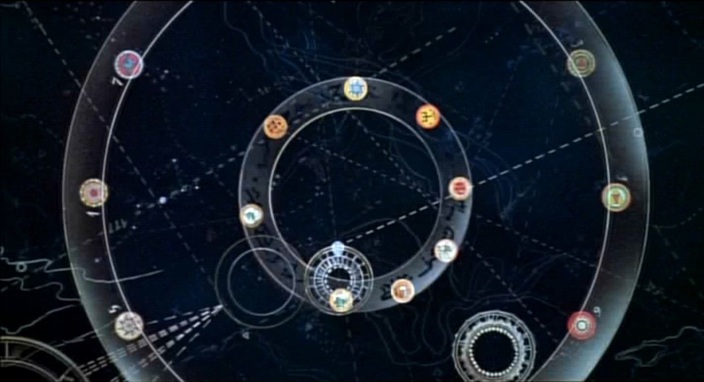
The thrust of much futurism since the 1950s has been toward space exploration and the prospect of colonizing Mars and exploiting the solar system’s resources. But I think the real final frontier for our species (and any intelligent, technological civilization) is going to be Time. Our destiny, if we do not destroy ourselves, is to become timefarers and something like history gardeners, sowing seeds in the past for a better tomorrow.
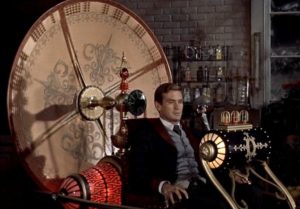 The past cannot be changed, but that is no obstacle to influencing the past: We don’t actually know much (or anything) about the past–even our own personal pasts, believe it or not (memory is basically imagination); the past can be (and in fact, constantly is) interacted with in ways that lead to optimal outcomes ahead. This is what it means to be involved in time loops, and I think we (and all living creatures, and maybe even the fabric of spacetime itself) are made of time loops. We will always find that our forays into the past were already included in our histories, and these discoveries are redemptive.
The past cannot be changed, but that is no obstacle to influencing the past: We don’t actually know much (or anything) about the past–even our own personal pasts, believe it or not (memory is basically imagination); the past can be (and in fact, constantly is) interacted with in ways that lead to optimal outcomes ahead. This is what it means to be involved in time loops, and I think we (and all living creatures, and maybe even the fabric of spacetime itself) are made of time loops. We will always find that our forays into the past were already included in our histories, and these discoveries are redemptive.
If history gardening is also a technological possibility for our descendants on a collective level using actual, physical time travel, then we should look for evidence of it now. The UFO phenomenon is the most obvious place to look.
The possibility that UFOs represent time traveling technology rather than (or in addition to) space traveling technology has gained renewed cache lately, but it is not a new idea. It is implicit in some of Jacques Vallee’s writing, for instance. In his classic, Passport to Magonia, he suggested that the UFO phenomenon is some kind of active shaping of our imagination possibly projected from some interdimensional elsewhere, although he says explicitly that one way of looking at Magonia is as the future–either our own future or perhaps the future of some other civilization. This line of interpretation of Vallee’s work is explored further by Jeffrey Kripal in his essential book, Authors of the Impossible.
Lately, physical anthropologist Michael P. Masters has revisited the UFOs-as-time-travelers idea in a more nuts-and-bolts fashion. Masters builds his argument from the principle of neoteny–also called paedomorphy–or the retention in adulthood of juvenile features a species’ ancestors. The resemblance of many reported “ETs” to children (small stature, big heads, and big eyes) suggests to Masters that they could be our distant descendants.
From where I sit, having no direct experience of the phenomenon, I’m agnostic about most ufonaut and visitor encounters. So many reports seem “archetypal,” when they do not seem hoaxed or like some kind of mind-control experiment, and separating the psychological or imaginal dimension from the physical reality seems impossible. So, boringly perhaps, I am more interested in evidence from first- and second-kind close encounters—i.e., sighting reports—that could support the existence of time traveling technology in our airspace.
What would that evidence look like? What are its visual signatures?
Let’s explore a few possibilities.
Wormholes
What we really mean by “time travel” is the movement of the time traveler’s subjective “now” relative to the surrounding temporal river.
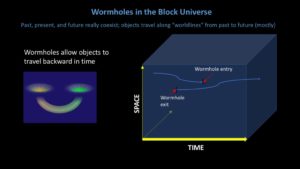 If the universe is a four-dimensional continuum (spacetime), or block universe, then objects are really worldlines, snaking their way through the block. This holds for an H. G. Wells-style time machine too. Traveling forward in time in such a device is in fact no different from just sitting there, waiting a long time for it to be the future. For all practical purposes, it is the same thing as a spaceship traveling at relativistic velocity or with suspended animation. Either way, you step out of your spaceship and you haven’t aged but it’s the future all the sudden. If you were in cryosleep, you also have a hangover. The problem is getting back to your home time.
If the universe is a four-dimensional continuum (spacetime), or block universe, then objects are really worldlines, snaking their way through the block. This holds for an H. G. Wells-style time machine too. Traveling forward in time in such a device is in fact no different from just sitting there, waiting a long time for it to be the future. For all practical purposes, it is the same thing as a spaceship traveling at relativistic velocity or with suspended animation. Either way, you step out of your spaceship and you haven’t aged but it’s the future all the sudden. If you were in cryosleep, you also have a hangover. The problem is getting back to your home time.
Backwards travel (into the past) is probably senseless in such a device without also talking about motion through space: Otherwise the time machine’s past is just its own previous history. What would it mean to push “T minus 5 minutes” on a stationary time machine console? What exactly would appear 5 minutes ago at the same physical location in your garage laboratory?
The most obvious answer, and the one most commonly discussed in the literature, is travel through a wormhole. Wormholes are like tubes linking distinct spacetime regions, and they allow objects to travel not only great distances across space but also in both directions across the fourth dimension.
You can find a million articles on wormholes on the internet, so I won’t go into more details. But is there evidence of wormhole travel in the UFO literature? I see the eager hands waving in the front row, but I’m sorry to disappoint you. For various reasons, I don’t find the famous description of an aerial portal sighted at Skinwalker Ranch very compelling as evidence of a wormhole or dimensional doorway (or star gate). There is a tell in the authors’ description that makes me seriously doubt the story:
When I asked Gorman for a detailed description of the orange shape, he told me that it looked different depending on the observer’s viewing angle. … It was like a three-dimensional orange tunnel that receded away from them, and the sides of the tunnel were perfectly camouflaged with the sky, so from a side view an observer could see nothing at all. The only perspective that offered a good view into the interior was directly opposite the mouth of the tunnel.[64-5]
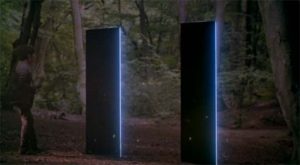 The wonderful Time Bandits (and a million lesser movies) notwithstanding, a tunnel or door is not in fact what a wormhole mouth would look like to an outside observer. For reasons I explored years ago on this blog, a wormhole mouth is a convex, three-dimensional object, and from a distance it would look like a sphere—visible in all directions. To me, the description in Hunt for the Skinwalker sounds very much like either a sky hologram meant to fool people or else a rancher who didn’t know what wormholes would look like telling a fib.*
The wonderful Time Bandits (and a million lesser movies) notwithstanding, a tunnel or door is not in fact what a wormhole mouth would look like to an outside observer. For reasons I explored years ago on this blog, a wormhole mouth is a convex, three-dimensional object, and from a distance it would look like a sphere—visible in all directions. To me, the description in Hunt for the Skinwalker sounds very much like either a sky hologram meant to fool people or else a rancher who didn’t know what wormholes would look like telling a fib.*
But there’s no need to limit our future time-traveling selves to conventional air- or spacecraft traveling through wormholes. A more interesting possibility is that some UFOs could themselves be wormholes. Assuming a roughly spherical chamber for wormhole generation in some distant future laboratory, the wormhole projected into the past would appear to an outside observer as that chamber turned inside out. Only as you approached and entered the perceptually and cognitively bewildering object would you realize you were … somewhere, or somewhen, else–a seamless transition from outside to inside. We have no familiar experience to serve as a touchstone for such an encounter, but any number of “high strangeness” UFO encounters seem to have such a quality. If a “ship” was really a laboratory chamber projected to another locale, it would explain the “bigger on the inside than the outside” quality abductees sometimes report. (Although again, with such reports, there is little way we can rule out cognitive distortions produced by hallucinogenic aerosols and other more mundane explanations.)
One problem that the UFO-as-wormhole possibility would help solve is the incredible energies that are sometimes estimated to be associated with UFOs. In a 1998 paper, Vallee estimated the luminous power output of six UFOs in his encounter files, finding values potentially up to 30,000 megawatts in one case, which is not even including the power necessary for propulsion. If some of these objects were really wormholes projected from somewhere or somewhen else, instead of packing massive power plants (or massive batteries) within their visible dimensions, you could have a building- or city- (or planet-) sized power plant off-stage supplying the energy.
But still, wormholes and stargates are so 2019. Are there other solutions to physically traversing the time dimension in reverse that would be available to our human or posthuman descendants?
“Tell me about … quantum computers”
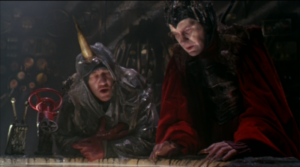 First let’s back up a bit … rewind. The prehistory of physical time travel is actually a technology that is already being developed, believe it or not. I’m referring to the possible ability to send messages (or information) into the past, and by extension, receive messages from the future. This will likely be possible using a quantum computer.
First let’s back up a bit … rewind. The prehistory of physical time travel is actually a technology that is already being developed, believe it or not. I’m referring to the possible ability to send messages (or information) into the past, and by extension, receive messages from the future. This will likely be possible using a quantum computer.
A quantum computer is a matrix of atoms or other particles that are entangled and used as bits (or qubits, quantum bits) to perform computations. Their enhanced power is usually described as a function of the way they capitalize on superposition–the ability of a qubit to occupy more than one state simultaneously, thereby facilitating a kind of hyper-parallel processing. But if Yakir Aharonov and a growing number of other physicists are right, the uncertain or seemingly random aspects of interactions at the smallest scales are really the portion of retrograde causal influence on a particle’s behavior. In this view, the entanglement that enables quantum computation is a function of a kind of causal zig-zag back and forth through time. By extension, the superposition that gives quantum computers their power would really be computation over the computer’s history. The computing power of a quantum computer, in this view, depends on how long you leave it plugged in.
Lots of recent work is showing that causal order can be reversed in quantum computers. As you already know from having read my book Time Loops in your near future (click here to order), you can use a quantum computer to “teleport” objects through time (destroying the object in the future, reassembling it in the past), a bit like the transporter in Star Trek except across the fourth dimension. Long-lived quantum computers attached to peripherals like 3-D printers could also theoretically create objects in the past based on instructions sent from a user in the future–a premise of William Gibson’s novel The Peripheral. Such objects could include “time drones” piloted by a future operator. These would not be true time machines, because only their blueprints and commands come from the future, not the machines themselves; but they are a likely first step toward true history management via technology.
There are two major limitations on purely quantum-computer-mediated time travel. The most obvious is that you cannot send a time drone to an earlier point in time than when the computer was turned on. Since we are right now only at the very infancy of quantum computing, we would not yet expect to see 3-D printed time drones flying around based on information sent back from future users. (And nobody in the field has apparently figured out yet that these devices are really time machines, but it’s only a matter of time, so to speak.)
The other limitation concerns the wyrd rules that govern information propogation into the past. Information cannot reflux back in time in a way that would lead to its foreclosure in the future (grandfather-and-grandmother paradoxes, etc.). This means that for “freely willed” time-drone operators in the 23rd century, communication with a time drone printed out in the 21st will be garbled. Their viewscreens will not show a clear and literal representation of the past landscape, but may be distorted in various ways, or even symbolic. The same would be true for their instructions to the drone.
It is not coincidental that the same rules (Igor Novikov’s self-consistency principle) explain symbolic distortion in dreams. Your brain is really a tesseract or informational time tunnel–a hybrid quantum-classical computer–and (as you know from 2021-You having already read my forthcoming book Precognitive Dreamwork and the Long Self) it is possible that all dreams may be precognitive (or contain precognitive material) but in such a way that they cannot actually be used to foreclose or prevent the experiences pre-presented in them—hence all the symbolism and distortions. Sigmund Freud meets Einstein.
Flipbook Travel
Let’s get a little bit more precise about what actual time travel is: It is really the ability for a time traveler to occupy a reference frame that is distinct from the surrounding reference frame.
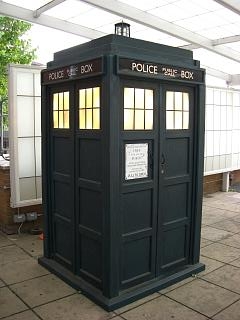 In a 2013 paper cleverly called “Traversible Achronal Retrograde Domains In Spacetime,” physicists Benjamin K. Tippett and David Tsang proposed that a true, TARDIS-like time machine could be created by isolating a bubble of spacetime geometry from its surrounding reference frame. Conceivably, such an isolated spacetime region could reverse its temporal trajectory through the block universe. This would be a true time machine, or what I like to call a timeship.
In a 2013 paper cleverly called “Traversible Achronal Retrograde Domains In Spacetime,” physicists Benjamin K. Tippett and David Tsang proposed that a true, TARDIS-like time machine could be created by isolating a bubble of spacetime geometry from its surrounding reference frame. Conceivably, such an isolated spacetime region could reverse its temporal trajectory through the block universe. This would be a true time machine, or what I like to call a timeship.
There’s a lot of talk in the UFO world these days about metamaterials. Rubbing my temples and squinting, I do foresee that nano-engineered metamaterials are probably the answer for creating time-reversible objects along the lines of what Tippett and Tsang proposed. For instance (just guessing here), a spintronic superinsulating or superconducting metamaterial might be used to create a membrane or barrier capable of surrounding and encapsulating the thermodynamic reference frame of a timefaring chrononaut and her cat from the reference frame of the surrounding environment. After she removes her comfy sleeping cat from her warm control panel, the chrononaut could pull a lever and reverse the flow of time within her timeship’s hull relative to that of the outside flow of events.
Such a vessel would be able to make switchbacks in the time dimension as freely as a plain old spaceship can make a switchback in space. And here’s where ufologists should take note: To an outside observer, such a switchback in time would have a distinct appearance, creating a unique motion signature that could identify such a craft.
Specifically, an object reversing its temporal direction would look from outside like two identical objects converging and immediately vanishing. The two objects are/were really the same object, one of which was traveling into the past. (More accurately, we would say that its worldline through the block universe did an about-face.) This type of temporal switchback is something you can see for yourself if you diagram 4-D motion in a flipbook, my latest weird hobby. My artistic abilities and my patience do not allow me to depict any timeship more complicated than an orb, but click on the frame below to see what a basic time reversal for an orb-shaped timeship (“throwing it into reverse”) would look like:
When our chrononaut decides it is boring traveling backwards against the external temporal reference frame, or when she reaches her destination time, she could throw the lever again, reversing the time flow and rejoining the local historical reference frame. To an outside observer (at an earlier time), it would be the opposite of the above situation: It would look like an object (the timeship) expanding into existence from nothing and immediately splitting into twin objects traveling apart:
In my flipbooks that litter the house and perplex my wife and daughter, crudely penciled orbs appear out of nowhere, split into two, and one of those two merges with another orb and disappears. This is a basic S-shaped switchback in time for a single orb:
So, quite distinctively, time travel and time reversal create doppelgangers—clones—in violation of the conservation laws physicists used to preach.
 It so happens that the writers of the beyond-wonderful film Yellow Submarine figured out the doubling effect of time travel. After accidentally traveling backwards through the Sea of Time, the Fab Four reverse course again and then observe another version of themselves traveling backwards. Then they sing “When I’m Sixty-Four” and Eric Wargo gets a little tear in his eye … just before he gets all pedantic and mansplains to bored-looking wife and daughter that there ACTUALLY should be a third submarine, the original version of themselves before the switchback. Time reversing objects tend to appear in odd numbers, you see–another thing you quickly discover when you depict these turnabouts in flipbooks.
It so happens that the writers of the beyond-wonderful film Yellow Submarine figured out the doubling effect of time travel. After accidentally traveling backwards through the Sea of Time, the Fab Four reverse course again and then observe another version of themselves traveling backwards. Then they sing “When I’m Sixty-Four” and Eric Wargo gets a little tear in his eye … just before he gets all pedantic and mansplains to bored-looking wife and daughter that there ACTUALLY should be a third submarine, the original version of themselves before the switchback. Time reversing objects tend to appear in odd numbers, you see–another thing you quickly discover when you depict these turnabouts in flipbooks.
In his book Identified Flying Objects, Masters notes that some UFOs show signs of disappearing and reappearing, which could suggest some kind of wormhole or stargate traversal, or jumping between timeframes. More intriguing to me are the reports of lights or solid objects that behave suggestively like the orbs in my flipbooks: confusingly splitting into two or more objects after appearing and/or converging, merging, and vanishing.
Splitting and merging is behavior consistent with a single timeship reversing its direction along the T-axis of local time. But it can get even more complicated and strange when the chrononaut decides to switch the temporal vector of her timeship repeatedly, perhaps to get multiple vantage points on the same external event. What is really a single time-reversible object can quickly look like a swarm of orbs (always an odd number) dividing and merging in a hypnotically beguiling pattern:
I invite readers aware of these three specific behaviors in UFO reports—(1) twin objects appearing from nothing and flying apart, (2) identical twin objects converging and vanishing, and/or (3) “swarms” of coordinated objects or lights merging and dividing in this specific way—to point me in the direction of references. And observers should be on the lookout for these specific behaviors.
World-Rewinding
The physically minded will have spotted some problems with my timeships. I have assumed for flipbook purposes that a time-reversed object is really just a duplicate of the original object occupying the same time frame—in other words, a worldline or worldworm that has doubled back. But the special properties of the superinsulating metamaterial might make it impossible to interact electromagnetically with the surrounding environment in either direction—in other words, it might de facto be cloaked.
If that’s the case, then the motion signature of a simple brief time reversal followed by switchback would be: a duplicate object appearing at a distance from the first, followed at some point thereafter by the disappearance of the first object.
However, this would present serious navigational problems, as we are about to see. So for my purposes, I’m assuming that the superinsulator is sandwiched between a conventional inner hull surrounding the cabin and a sort-of-conventional outer hull that is traveling forward in time even when the ship within is traveling backwards. I’ll explain why this might be important in short order.
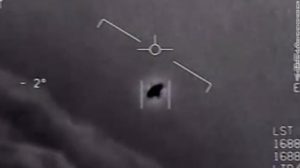 Another potential problem concerns the mechanics of those switchbacks. Remember that, unlike H. G. Wells’ time machine, a timeship with a metamaterial hull would need to be able to travel conventionally in space as well, so that its journeys into the past don’t conflict with itself. This is potentially a problem for any timeship traveling slower than light. To solve this problem, I am anticipating some type of metamaterial that modifies the “metric” around the ship in such a way that it will enable switchbacks at lower velocity (at least as measured by an outside observer).
Another potential problem concerns the mechanics of those switchbacks. Remember that, unlike H. G. Wells’ time machine, a timeship with a metamaterial hull would need to be able to travel conventionally in space as well, so that its journeys into the past don’t conflict with itself. This is potentially a problem for any timeship traveling slower than light. To solve this problem, I am anticipating some type of metamaterial that modifies the “metric” around the ship in such a way that it will enable switchbacks at lower velocity (at least as measured by an outside observer).
Perhaps relevantly, Jack Sarfatti thinks the hulls of the famous Tic Tacs are made from layers of molecularly engineered materials able to slow down the speed of light, thereby insulating the occupants from the local gravitational field and enabling astonishing speed and maneuverability. (He has also speculated that these objects are indeed made by us, in our future.)
But another big problem concerns navigation. What would a chrononaut actually see on her timeship viewscreen? The external environment would look like a film running in reverse, right? Unfortunately, no.
Theoretically, traveling backward against the external temporal reference frame, our chrononaut should be effectively blind, since the photons needed for vision also will be receding toward rather than emanating from their sources. Everything outside the ship would look black from from the pilot’s vantage point during a retro-jaunt.
Unless, that is, there is a tachyon spectrum, a realm of faster-than-light particles that travel in temporal retrograde. Our eyes can’t see in such a spectrum, but if it exists, presumably the builders of a time-reversible ship also could make you special goggles to see tachyons too, enabling you to enjoy the “world-rewinding” experience of timeship travel against the local temporal current.**
However, if the internal reference frame of the ship is totally sequestered from the outside, then nothing, during that retro-flight, can get in our out, and that includes a closed-circuit feed from the cameras mounted on the outside of the ship.
Depending on the hull’s properties, there could be a strange workaround: If an outer hull layer is still traveling forward in time along with the external thermodynamic environment, it could be embedded with cameras and thus film its forward journey from the past and then transmit its record to the interior of the ship during the crossover/switchback. The pilot inside could then play the record in reverse, to “see” the external environment during that jaunt.
And here’s one place the law of wyrd would come to play a role in timeship navigation. Suppose the chrononaut decides she doesn’t like where she is heading (into the past) and decides to swerve—that is, to contradict the history that was recorded in the backwards-playing video that is serving as her viewscreen-into-the-past? Could she?
She might feel like that’s what she was doing. But in fact, her video will always anticipate her maneuvers and her thoughts/impulses. Again, as I’ve discussed in previous posts, the whole business of grandfather paradox and “bilking” one’s own future is really moot, given the Novikov self-consistency principle. Since history is self-consistent, everything the chrononaut sees on her screen will be consistent with her own in-the-moment, “freely willed” decisions. This is what wyrd means: History is self-consistent.
You cannot cheat your future self. Accept it or don’t. Someone who is made crazy by the laws of wyrd won’t step into a timeship in the first place, and quickly would find the experience unbearable, if they did. They would be like the sufferers of “akinetic mutism” in Ted Chiang’s “What Is Expected of Us?” In contrast, the Time Force pilots of the 24th Century will be selected on the basis of their non-neurosis, their conscientious obedience to their future and past selves, and their resistance to feeling like they need to defy or resist reality. They will be like the heptapods in Denis Villeneuve’s great film Arrival (based on another Chiang story). They will be Zen beings, having left their egos at the door and transcended ancient hangups about free will.
Part of what really fascinates me about time travel is that, however you slice it, it creates added mass that shouldn’t be there. In a universe that includes time traveling objects and information, the quantity of matter and energy in a given time window is determined not only by what was there just a minute ago, but also by how much cloned matter/energy has traveled back from the future (and thus self-duplicated). This could have immense cosmological implications. Backward-traveling objects, even if they are electromagnetically isolated in superinsulating envelopes, would still gravitationally interact with the surrounding environment. Could this be an explanation for dark matter/dark energy?
The search for the mysterious gravitational envelopes that cause stars in the outer galactic disc to travel faster than they should around the center needs to consider the future technological history of the galaxies in question. Are we perhaps already seeing the effects of wormholes, timeships, and other time-travel technologies that will shape the universe in its middle- and older age, reaching back into the present/past?
Postscript: Preemptive Tenet Criticism
I don’t know if it is a symptom of my own precognition, but a month or two after I became weirdly obsessed with making flipbooks about time-reversing orbs, the first trailer of the forthcoming Christopher Nolan film Tenet was released. The film, whose theatrical release has now been put off until September (good luck with that), deals with temporal inversion, or time-reversal—specifically spies somehow reversing time locally to prevent World War III. The special effects featured in the trailers seem to depict the “world rewinding” appearance of the external environment from the point of view of time-reversing spies.***
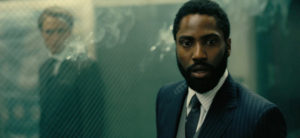 The first Tenet trailer showed a rolling car de-fragmenting on a highway in apparent defiance of the arrow of time and entropy. Subsequent trailers have shown the main character (John David Washington) “firing” bullets at a target, but a woman explaining to him that his gun is really “catching” the bullets, which are presumably traveling in temporal retrograde.
The first Tenet trailer showed a rolling car de-fragmenting on a highway in apparent defiance of the arrow of time and entropy. Subsequent trailers have shown the main character (John David Washington) “firing” bullets at a target, but a woman explaining to him that his gun is really “catching” the bullets, which are presumably traveling in temporal retrograde.
We can expect that Nolan may attempt to exploit the dramatic possibilities afforded by time reversal. A tempting one for a spy film is getting into tightly guarded buildings or sealed vaults by waiting until after they are opened and entering in time-reversed mode, or else going back in time to before the guards were placed or the vault was closed. You could do a heist this way, or a daring rescue. That might be what Nolan has in mind.
But from the looks of it, Nolan is fudging things in a bunch of ways. Let me be the first irritating time-travel pedant to preemptively point out his possible error(s).
The first is that, at least from the trailers, I see no evidence of the doubling (and really, trebling) that would be the signature of time-reversing objects and people. At some point in the narrative, if his hero is time-reversing, he’ll need to merge with his doppelganger and or appear out of nowhere as a pair of twins, one of which is (ideally) “passing” by doing a kind of “backwards” walk-and-talk like the Black Lodge characters in Twin Peaks. (Incidentally, that Lynchian technique is one that the Beatles also used, in the video for “Strawberry Fields Forever.” I have heard it was first used by Jean Cocteau in Orpheus.) Or, time-reversing objects like that car need to split into two and then merge with their doubles. Same with the bullets.
There also needs to be some kind of delineation between temporal reference frames—minimally a membrane such as my hypothetical metamaterial timeship hull. Are the main character and the woman traveling back in time while he’s “shooting” at the wall? Are the bullets traveling back in time relative to the shooter? The scene doesn’t make sense, at least as shown.
 Again, causal linearity is generally regarded as a function of the second law of thermodynamics. Entropy defines our unilinear experience of time, but it isn’t the same thing as time-the-dimension. So from the trailers, it looks like it is not really time that is reversible in Tenet but entropy. Nolan may be allowing a nifty sci-fi idea to be driven by some original special effects—in this case, seamlessly integrating backward-running footage of entropic events like gunshots and car crashes into ordinary scenes—rather than by real science.****
Again, causal linearity is generally regarded as a function of the second law of thermodynamics. Entropy defines our unilinear experience of time, but it isn’t the same thing as time-the-dimension. So from the trailers, it looks like it is not really time that is reversible in Tenet but entropy. Nolan may be allowing a nifty sci-fi idea to be driven by some original special effects—in this case, seamlessly integrating backward-running footage of entropic events like gunshots and car crashes into ordinary scenes—rather than by real science.****
A different, more coherent (and interesting) possibility for Tenet is that the temporal inversion being depicted may actually be the main character’s ability to un-stick his subjectivity/awareness from the external temporal flow, a la Billy Pilgrim in Kurt Vonnegut’s Slaughterhouse Five. In that case, what we may be seeing in the trailers is his learning to scrub back and forth along his own timeline, as in a video-editing program, likely as a result of some kind of training/initiation by this secretive Tenet group. We may be seeing his time-reversed subjective point of view, in other words.
In either case, the first trailer hinted that the protagonist’s ability may also have to do with something about a prior near-death experience or something about his actual death (later). Thus Tenet may be a sort of superhero origin story about precognition (loosely defined), and Nolan may be trying to out-do Arrival, which also explored these themes.
I’m looking forward to finding out … but not in a theater, thank you very much.
NOTES
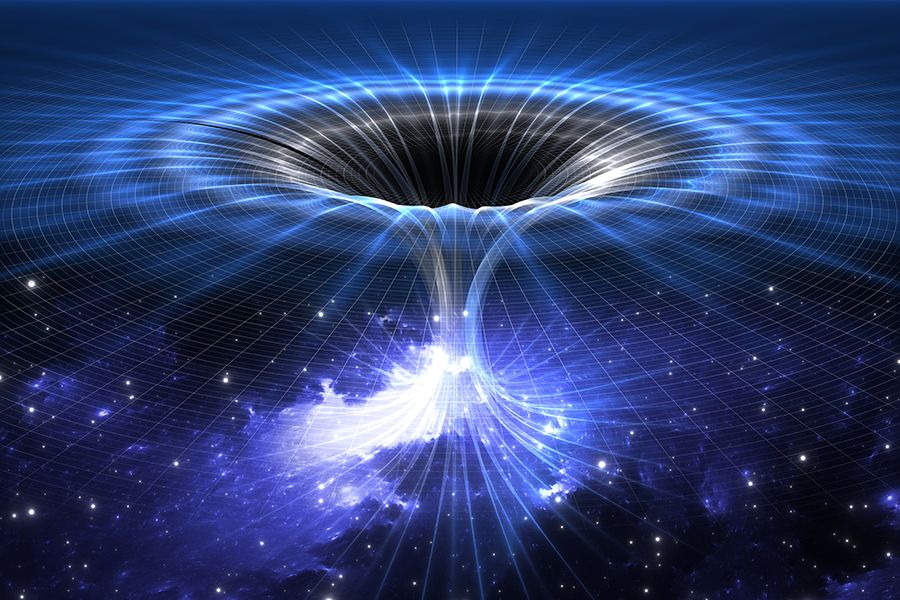 * I’ve been called “the Sherlock Holmes of retrocausation,” which was mere flattery, but I actually AM the Sherlock Holmes of visual perspective. It was the subject of my PhD dissertation. So don’t get me started on the sins of science illustrators and special effects folks for decades representing wormholes as doors, and black holes as whirlpools or big space anuses. The only film to have ever gotten both objects right visually is Christopher Nolan’s Interstellar, but that was thanks to his work with Kip Thorne on the science aspects.
* I’ve been called “the Sherlock Holmes of retrocausation,” which was mere flattery, but I actually AM the Sherlock Holmes of visual perspective. It was the subject of my PhD dissertation. So don’t get me started on the sins of science illustrators and special effects folks for decades representing wormholes as doors, and black holes as whirlpools or big space anuses. The only film to have ever gotten both objects right visually is Christopher Nolan’s Interstellar, but that was thanks to his work with Kip Thorne on the science aspects.
As for Skinwalker … Many of the big UFO cases of the last few decades, including this one, are looking more and more like psyops to me: a cocktail of extravagant aerial holography, cloaking tech, and hallucinogenic aerosols being deployed against both unwitting members of the public and semi-witting experts to see what sticks. MKULTRA 2.0.
** Tachyons, when they were proposed in the late 1960s by Gerald Feinberg, seemed to offer a handy possible explanation for psi phenomena, especially precognition. It makes intuitive sense until you consider that tachyons are about as useful for directly seeing into the future as photons are for directly seeing into the past—in other words, not at all. Looking through tachyon goggles, the world would look just like it does normally.
The exception is astronomy. With very distant objects, it does make a difference whether you were seeing the past of an object (as we do with photons—billionths of a second in the past for anything in our immediate environment)—or the future of an object, as we would when observing in the tachyon spectrum. Through a tachyon telescope, nearby stars would appear more or less in their familiar positions, but more distant objects would be offset, and distant galaxies would be in very different positions and configurations.
I predict the tachyon telescopes of the 22nd century will observe much more evidence of sidereal and even galactic engineering in our own and neighboring galaxies, since the future may hold much more time for civilizations to evolve and reshape their stellar neighborhoods. A tachyon telescope may reveal lots of Dyson spheres and ringworlds, for instance.
*** Occultists will know that Tenet refers to the Sator Square, a five-word palindrome believed to have magical properties.
SATOR
AREPO
TENET
OPERA
ROTAS
The most literal of the possible translations is “Farmer Arepo has a plough (wheel) for his work,” but there are others.
Palindromes were believed to confuse the devil, sort of the way time travel and time loops confuse us. TENET, the middle word (“holds/possesses”), is the only palindrome within this palindrome, so it is a kind of meta-palindrome.
**** The great Memento and the at-least-wormhole-accurate Interstellar notwithstanding, Nolan has history of science fudging. Don’t get me started on the goddamn out-of-gas spitfire in Dunkirk somehow maneuvering without stalling. That’s a Hanukkah miracle … except the Dunkirk evacuation was in May, nowhere near Hanukkah. Nolan clearly has issues with entropy. (Did entropy kill his mom and dad?)
I’m not a fan of Inception either, which imagined the dreamworld as coherent CGI environments for standard action fare. It has been suggested that Tenet could be an Inception sequel. I’ve never had a dream anything like anything in Inception, and neither have you. The only directors who have ever made good films about dreams are David Lynch and Luis Bunuel. Okay, and Victor Fleming. Change my mind!


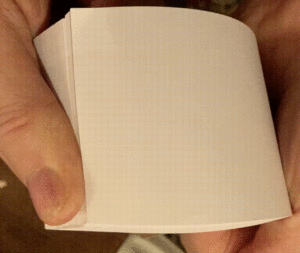
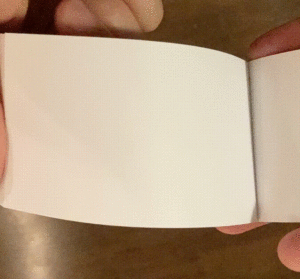
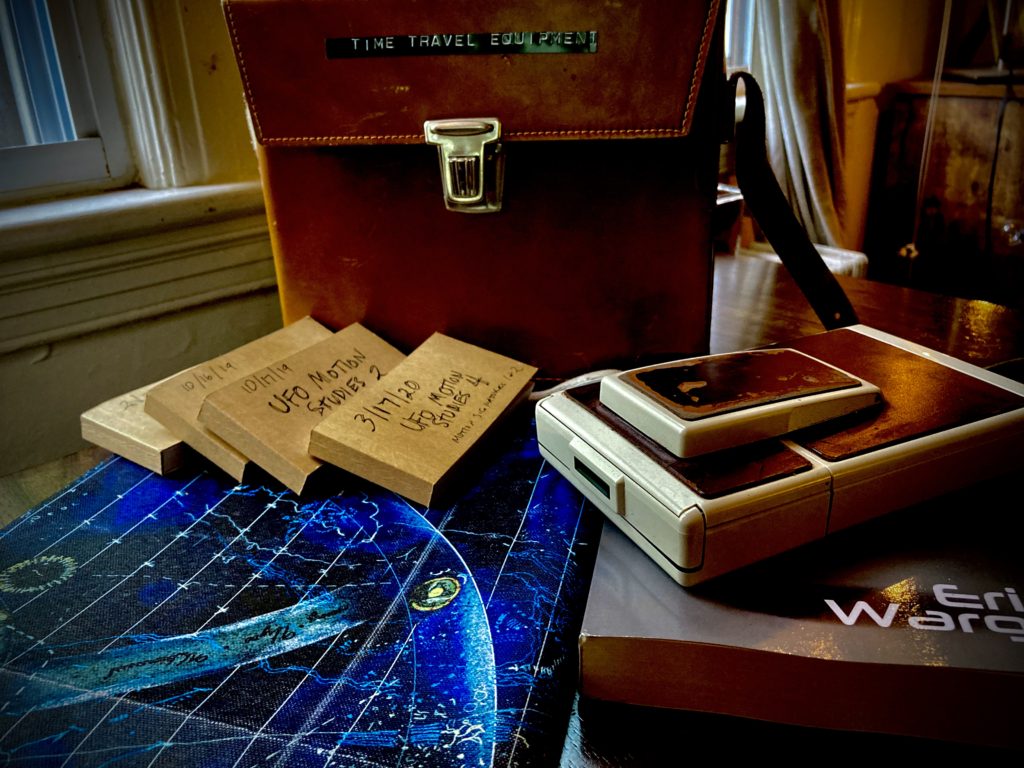




So the fork traversing orthogonally through our perceptual flatland may not be of a higher spatial dimension, and not even be a fork, but the signature of a time-traveling object instead. Spectacular!